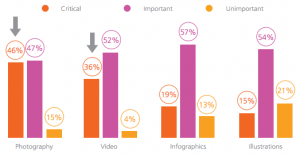Rejection is never easy. This isn’t just true in your personal life. It’s also true when it comes to business. Sure, you reach out to a prospective client and they don’t hire you. That’s a part of the business, part of the game. It’s completely different when you have client and did some awesome work for them only to then deal with invoicing rejections .
What did you do wrong? Are they just a deadbeat client who played you? Just like getting shutdown by your longtime crush, you have a million thoughts racing through your mind. To avoid this feeling in business, here’s what you can do to stop invoicing rejections from happening again.
Invoice ASAP
Let’s say you went to the dentist or hired a landscaper. They say they’ll bill you and then you go on your way. Fast forward several months later and you finally receive a bill from that dentist or landscaper.
Since you probably forgot all about it, you’re not going to pay the bill. You may even think that it’s junk and throw it away. While you should probably call the business to find out what’s going on, it’s understandable why you would react this way.
When it comes to stopping those invoicing rejections, you need to invoice as soon as possible after completing work. In fact, we’ve found that if you haven’t been paid within 90 days, only 18 percent of those invoices get paid.
Unless you have an arrangement with the client, you need to stay on-top of your invoices. This could be either weekly or immediately following the completion of the project. This way the client won’t reject the bill because it’s still fresh on their mind.
Know where to send your invoices.
It’s not uncommon for businesses to automate or outsource their accounts payable. This means that your point-of-contact isn’t always the individual who’s paying you. If you send them a bill, they may turn around and reject it since it’s not their responsibility.
Additionally, if they’ve outsourced their billing to a third party, that individual may reject it because it appears suspicious to them. For instance, you may have left off your phone number or logo. Even worse, it includes several grammatical or formatting errors. These two errors are looked for in fraud accounts. Don’t have your invoice look like fraud because you didn’t look up a word, or didn’t proofread.
As such, the invoice looks sloppy and unprofessional. Since it doesn’t appear legit, this individual won’t hesitate to deny it. An easy fix for these invoicing rejections is to create a clean, organized, and easy-to-read invoice.
Play by the rules.
To stop invoicing rejections, it’s also normal for clients to have their own billing guidelines or vendor retention agreements. These clearly state what’s expected of you and their payment terms. For example, they may only pay you via PayPal, on a specific date, or require information like a purchase order
Also keep in mind that certain countries have their own billing rules. For example, in Singapore there are strict rules in place that forbid you from shortening the company name or its address.
To save a lot of time, energy, money, and headaches, also review and adhere to the other party’s guidelines before submitting an invoice. Be sure to ask the your client about their country’s rules. This also shows respect.
Set your guidelines before beginning your project for your client concerning what kinds of tasks they will and will not reimburse you for. Make sure that you carefully read their rules, to be certain your invoice doesn’t contain charges they won’t agree to pay for. Save yourself time in having to correct and resubmit a rejected invoice, by adhering to their guidelines on your first submission.
Double-check your math.
One of the most common reasons why an invoice is rejected is because your match doesn’t add-up. For example:
- Total Amount — The total invoice amount is greater the total amount remaining to be invoiced.
- Line Item Amount — The invoice line amount is greater than the amount remaining to be billed.
- Quantity Invoiced — The quantity invoiced is greater than the quantity remaining to be invoiced.
- Receiving Amount — The invoice line amount is greater than the order line amount received.
- Receiving Quantity — The quantity invoiced is greater than the quantity received .
- Unit Price — The invoiced unit price is greater than the ordered unit price.
While most invoicing platforms do the math for you, always double-check it. You could have accidentally made a mistake. For example, if you charge $ 20 per hour, but accidentally hit an extra zero then you’re now charging $ 200 per hour. That’s definitely going to send-up a red flag.
Avoid shortcuts.
I understand that you’re busy and want to get your bills out as soon as possible. However, avoid shortcuts at all times. Again, many shortcuts are surefire situation for your invoice to get rejected.
As mentioned above, you can’t abbreviate the company name in Singapore. You also shouldn’t include each and every expense. This way the other party can see exactly what you’re charging them.
Watch your time.
When entering increments of time into the “Units” field of an electronic invoice, make sure you specify how many units each charge is for. And, don’t forget to add up the number of billable hours across your multiple line items.
As explained in a previous Due post, “Remember, clients aren’t too keen on paying for work that they believe could have been done faster. Time tracking tools provide documentation that shows how exactly you spent your time on the project.”
“This not only addresses any concerns that the client has regarding the invoice, it also puts an end to time theft, since you’re able to bill the client fairly — there is no guessing for those times and projects that you forgot to write down.”
The good news is that most invoicing platforms comes with a time tracking feature so that you can accurately track your billable hours.
Make sure your invoices are readable and properly formatted.
Whether if the client is manually reading the invoice or using invoice-reading software, you still need to make sure that your bills are readable and properly formatted.
For starters using different color hues can make reading a bill challenging. For instance, using yellow as the color of your text that’s placed on-top of a light blue background can be hard to see. Furthermore, using a small font size and a bizarre font-style can also hinder the readability.
Stick with black for your text and numbers, while having large enough font-sizes that are easy-to-read.
Also, make sure that your invoice is properly formatted. Typically, this means that your invoices is comprised of:
- A professional header containing your information.
- Client’s contact information.
- Invoice number and due date.
- Itemized breakdown of services.
- Your preferred payment method.
Bill in the right currency.
Another common culprit of delayed payments is currency discrepancy. This is especially true if you’re working with client’s overseas.
For instance, in India, it’s difficult to process wire transfers from foreign currencies. As a result, payments may not be resolved for months. Additionally, PayPal isn’t accepted in China, so you would have to use a gateway like Alipay instead.
Depending on the location of the client, you might also take into consideration their domestic equivalent of all the amounts on the invoice. This could even the inclusion or exclusion of taxes.
Keep your address book up-to-date.
Finally, you should make sure that all of your contacts are up-to-date to avoid invoicing rejections. This way you can be certain that you’ll be sending the invoice to the right individual. The last thing you want is to email an invoice to a defunct email address.
While most clients will notify you in advance, the clients that you don’t frequently communicate with probably won’t let you know of any changes. Be proactive and frequently check that your address book is up to date.
Most of the time this can be an annual event. But if you have a hefty email list, you may want to clean your lists every three months.
Business & Finance Articles on Business 2 Community
(60)
Report Post





